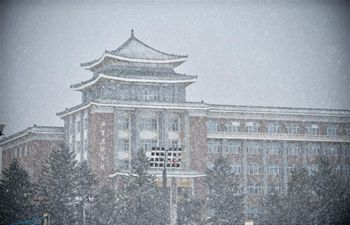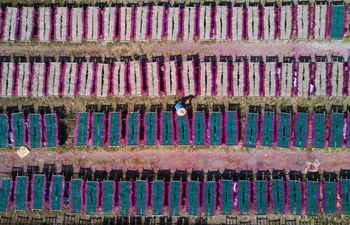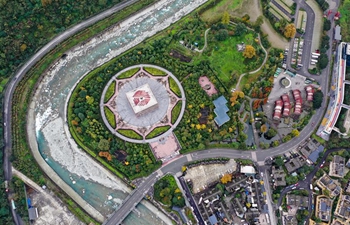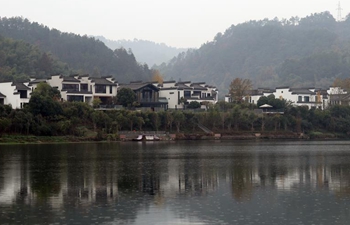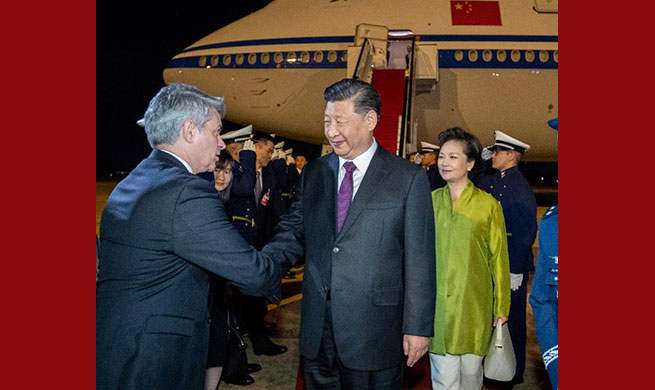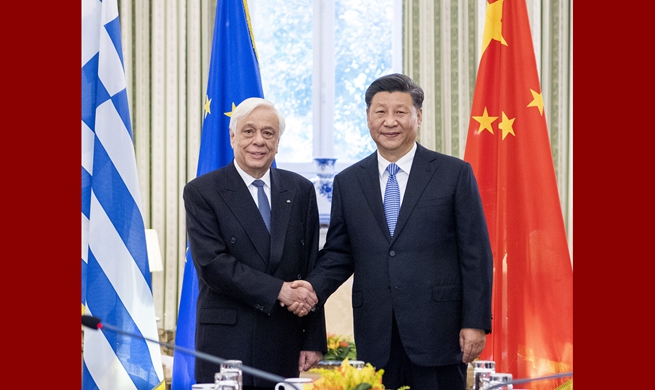HONG KONG, Nov. 13 (Xinhua) -- A batch of 231 pieces of "national treasures" from Afghanistan finally made it to China's Hong Kong Special Administrative Region after a long voyage traveling 28 museums across the world, making a debut at the Hong Kong Museum of History.
The rare and valuable artifacts showcased in the special exhibition named "Glistening Treasures in the Dust -- Ancient Artifacts of Afghanistan," comprise goldware, glassware, bronze sculptures and ivory carvings unearthed from the four famous archaeological sites of Tepe Fullol, Ai Khanum, Tillya Tepe and Begram.
"These items covers a time span from the Bronze Age to the first century AD, which demonstrates the profound influence of foreign ancient cultures such as ancient Greek, Roman and Indian on Afghanistan and its surrounding regions," said Ho Wai Yee, curator of Collection and Dr. Sun Yat-sen Museum of the Hong Kong Museum of History.
"This also evinces its cultural diversity embracing the features of different Steppe cultures," Ho added.
Jointly hosted by HKSAR's Leisure and Cultural Services Department and National Museum of Afghanistan, this event is definitely one of the key exhibitions for the museum this entire year. The special exhibition lasts from Nov. 6 through next February.
Some of the key items on display include the golden bowl with an engraved beard bull unearthed from Tepe Fullol, gold artifacts that have integrated different cultural elements of the Eurasian regions and the plaque with Jataka scene of the Buddha's previous life, among others.
These artifacts also attest to the role played by ancient Afghanistan as the cultural crossroads of the Silk Road, which promoted the exchange and integration of world civilizations.
"Afghanistan is a place that people feel both strange and familiar with," Ho said, explaining that people are familiar because they often read news stories about the political situation there, but few are aware of its once splendid culture.
This exhibition offers a good opportunity for Hong Kong people to understand more about the Afghan culture, she added.
In fact, the precious collection originally stored in the National Museum of Afghanistan was put under threat ever since Afghanistan was plunged into political turmoil in the 1970s. Staff of the museum then began to transfer the artifacts to different locations so that they were fortunately protected from being destroyed.
In 2006, the collection made its global debut at the Guimet Museum in France, which marked the start of its long-distance world tour. In 2017, these artifacts were presented in eight cities in China including Beijing and Dunhuang, where they enjoyed widespread popularity.
To pay tribute to the Afghanistan people, the Hong Kong Museum of History also produced a 12-minute special documentary introducing local people's efforts to preserve these valuables.
"We firmly believe that the cultural heritage that we protect represents the spirit of the Afghan people and reflects our common history," said Muhammad Rahimi, head of the National Museum of Afghanistan, in the documentary.
Luckily, the 13-year exhibition tour around the globe has helped accumulate abundant experience and know-how about how to package, transport and protect the sophisticated artifacts so that their beauty can be appreciated by a wider audience. But in the mean time people can't help but wondering: when can these pieces of art eventually return home?




